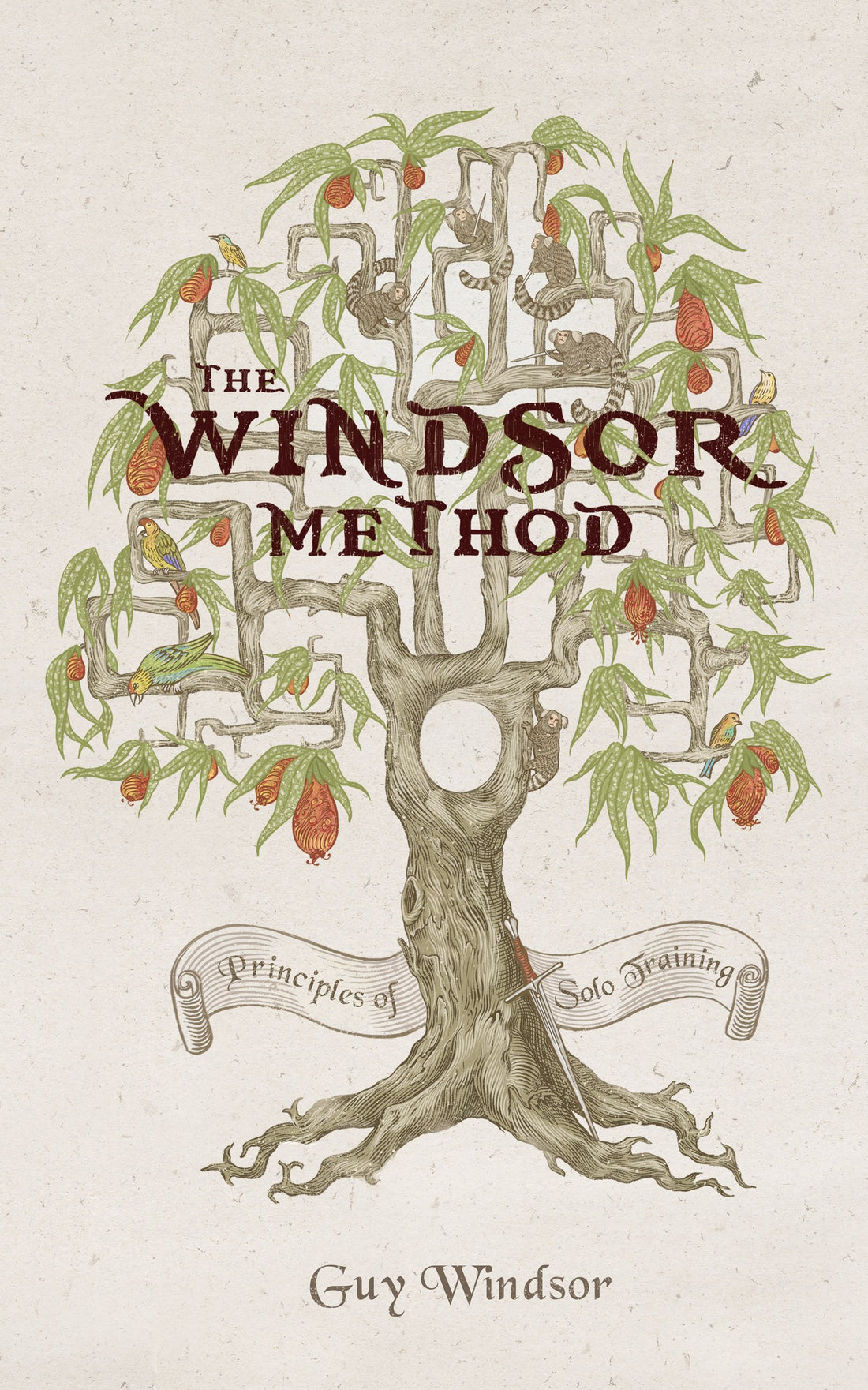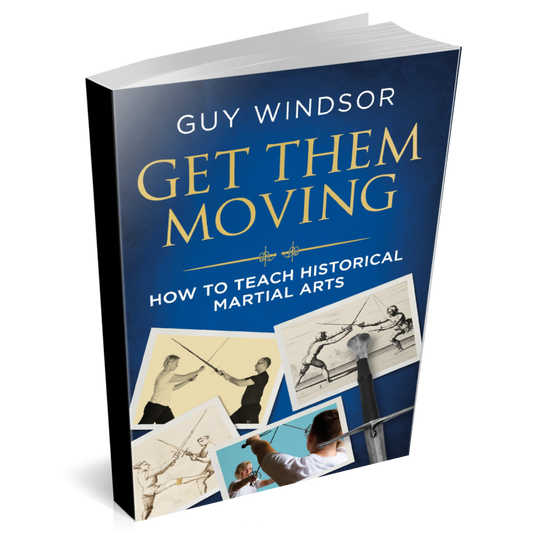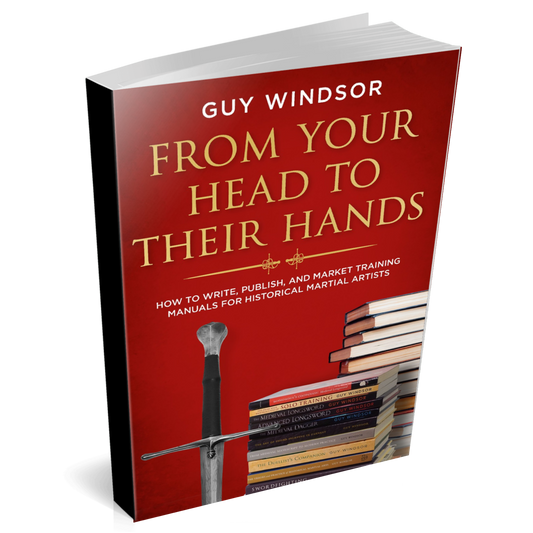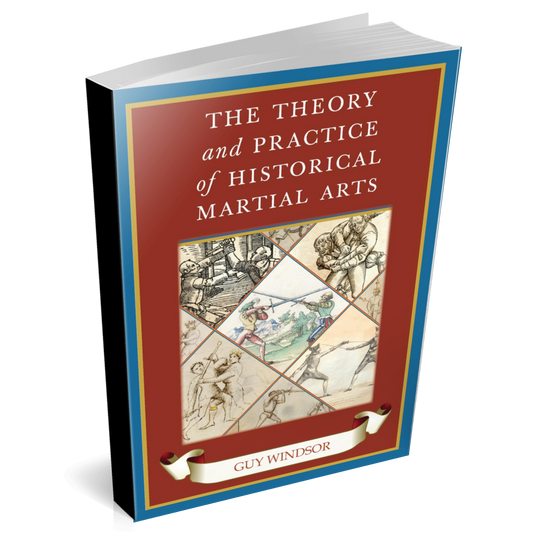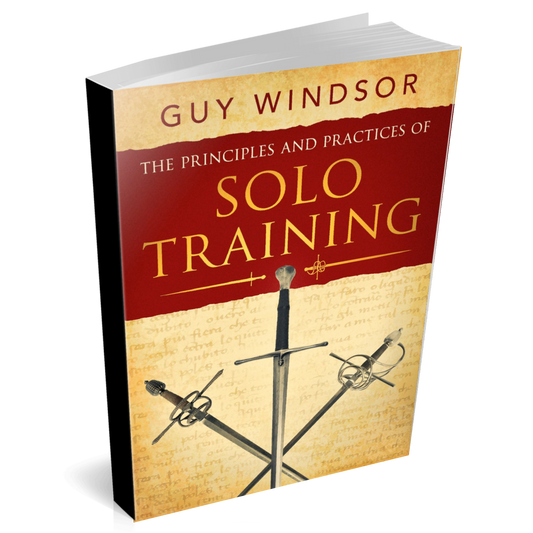Today’s episode is your October Challenge. This year I have been setting a different challenge every month, as I really don't like New Year's resolutions, and it struck me that there was an opportunity for self-development and self-improvement that we were missing by making these nebulous resolutions at pretty much the worst point in the year to make any kind of changes. It's right after Christmas and if you're in the northern hemisphere, it’s in the middle of winter. Not a great time to be trying to make a resolution that's going to last all year. So instead, we have a different challenge every month.
So far we have looked at breaking and making habits, prioritising sleep, prioritising food, learning a new skill, stamina and strength. Last month we looked at improving our range of motion. If you want to have a look back at all of those monthly challenges, you can go to guywindsor.net/blog and look at the category called “Challenge of the Month”.
Your challenge this month is to improve your footwork. And I borrowed this from my new book, The Windsor Method, The Principles of Solo Training, which you should definitely go and buy, of course, at guywindsor.net/solo.
Transcript
Today's episode is your October challenge. Now, these challenges are an idea I had when thinking about New Year's resolutions. I really don't like New Year's resolutions, and it struck me that there was an opportunity for self-development and self-improvement that we were missing by making these nebulous resolutions at pretty much the worst point in the year to make any kind of changes, because it's right after Christmas and it is usually, if you're in the northern hemisphere, in the middle of winter. It's just not a great time to be trying to make some kind of resolution that's going to last all year. So instead, we have a different challenge every month. The challenges so far have been how to break a habit. Then adding a habit and these should have been the other way around: it is easier to add a habit than it is to break one. But I didn't think the whole thing through thoroughly, I just sort of got cracking, as is my usual habit. See what I did there? That was followed by prioritising sleep and then prioritising food, then learning a new skill, and that gets you rested and well nourished and you know how to break habits and add habits and how to learn. So then we had a look at stamina, followed by strength. And last month's challenge was range of motion. And those of you who have been following along with my train-along morning exercise sessions will be deeply familiar with what it means to really prioritise a range of motion in your workouts. If you want to have a look back at all of those monthly challenges, you can go to guywindsor.net/blog and just search for monthly challenges. They should all be listed under a category called “Monthly Challenges”. Now, your challenge this month is to improve your footwork. And I borrowed this from my new book, The Windsor Method, The Principles of Solo Training, which you should definitely go and buy, of course. You can find it at guywindsor.net/solo.
Every able-bodied student I’ve ever taught could walk across the room to shake hands with a stranger without stumbling, missing, getting awkwardly close, or stretching out their hand from absurdly far away. The disabled students could all manage it too, though not necessarily by walking.
When considering “proper” footwork, it’s worth remembering that you can already judge distance, adjust your paces as necessary, and get to the right place at the right time, in familiar contexts. The key to mastering martial arts footwork is to experience it as a natural solution to an understood problem. The footwork is never the point: hitting your opponent without getting hit is the point.
All good footwork has some qualities in common. You are in perfect balance; moving smoothly; moving efficiently; moving gracefully. I have never encountered a martial art that prized clumsiness, except when faked to fool the opponent. As a general rule, the instructions that have produced the best footwork in my students are:
- Silent feet. If you can hear your feet, something’s wrong. You can stamp your feet deliberately (such as in an appel), but normal steps make no sound. If your foot hits the ground hard by accident or unconsciously, it’s a clear indication that you are not in control of your weight transfer, and in the moment of contact, you are completely stuck.
- Weight stays at the same level. If you were to plot the movement of your center of mass, it would remain at the same height all the time. The feeling is that your limbs are free to move around the still center. I often demonstrate this with star-jumps, really fast, though my waist barely moves. If a student is having difficulty with this in a footwork drill, I might give them a kettlebell to hold: suddenly the up-and-down component feels like too much work so they just stop doing it.
- Freedom. The point of the mechanics of a martial art is to make it easier to defeat your opponent. Never just to make things more difficult. If your neurology allowed you to learn to walk, then you should be able to master at least some variation on the fundamental movements of your art. Capoeira may be an exception to this, but if the art is generally used with both feet on the ground, it should be just fine.
When students are having problems with any of these three things, I usually get them to just walk normally, and work on these attributes while walking. Once they have a feeling for walking smoothly on silent feet with freedom, they can then apply that feeling with the footwork actions they were having trouble with.
Martial arts footwork is always adapted to specific tactical goals. Its purpose is to get us to the right place at the right time to strike safely. This may involve avoiding the opponent’s weapons, adjusting our measure, and power generation. The specific footwork techniques preferred by your art will depend on the doctrine, strategy, and tactics of your art. This includes aesthetic and social choices: in his 1798 masterwork The Art of Defence on Foot, Charles Roworth famously wrote that “Traversing is preferred by many to retiring, because it has not so much the appearance of suffering a defeat.” (A traverse is a sidestep, retiring is stepping straight backwards.)
The main footwork actions, in all styles, are some variation on the following options. You will almost invariably have one foot forward or the other, and your steps can therefore be done in the following ways:
- Forwards or backwards without changing the lead foot. Examples include Fiore’s accrescere and discrescere, modern fencing’s “step”.
- Forwards or backwards changing the lead foot. These are passing steps. Examples include Fiore’s passare (forwards) and tornare (backwards). They can be done bringing the other side of the body forwards, or keeping the body in the same relation to the opponent as before.
- Sidesteps without changing the lead foot. Examples include Capoferro’s scanso del pie dritto, and the traversing steps common in La Verdadera Destreza (the Spanish rapier system).
- Sidesteps changing the lead foot. Examples include Capoferro’s scanso della vita, and many cases of Fiore’s passo alla traversa.
- Lunging, a step forwards of only the lead foot. The classic example is of course the lunge, as shown by Capoferro.
- When stepping without a change of lead, the hips tend to remain in the same relationship to the feet.
- When stepping with a change of lead, the hips may turn relative to the feet. Fiore calls these mezza volta, the half-turn.
- In most cases, the weight will change from one foot to the other, the primary exception being the steps forwards or backwards without a change of lead. You can also shift your weight from one foot to the other without stepping, and with or without a turn of the hips. In its linear form, Capoferro’s strike in single tempo (of the ‘fixed foot’) would be a good example. In its turning form, Fiore’s volta stabile fits the bill.
- Finally, you can turn on a single foot, which is really a kind of passing step, though the weight stays on the same foot while the other foot turns around it. Fiore’s tutta volta is an example of this.
Many combat sports have a practice of bouncing forwards and backwards, basically doing little jumps. Olympic fencing champion Johan Harmenberg explains the reasons in depth and detail in his superb book Epee 2.0. It does serve a useful purpose, but I have only ever seen it in competitive sports, never in a martial art intended for mortal combat. Some arts do include a jump (in which both feet leave the ground).
Whenever a foot leaves the ground, it might kick, so I would file all kicking actions under ‘footwork’ too. Every kick I’ve ever seen fits one of the categories above.
Many arts include some kind of floor diagram for mapping footwork actions. In historical martial arts the most famous is probably Achille Marozzo’s star in his 1536 book Opera Nova, or the Destreza circle. Many arts describe a triangle step.
The image I use to store my footwork concepts is a triangle inside a circle inside a square. We can step forwards, back, to the side, around, and at an angle. The real question is why would you step? What does it give you?
Let me start by destroying a common myth. Stepping, as in moving a foot, does not ever add power to a blow. This is easily tested with any power striking practice such as hitting the tyre with a sword or a stick. Or indeed, cutting down a tree with an axe. You will always get the most power with both feet on the ground, driving the blow with the flexion of both legs and turning the hips. As soon as you take a foot off the ground, you lose half of the driving force. The additional speed you get from stepping is a tiny, tiny, fraction of the speed the weapon gets from the mechanics of correct striking, and conveys vastly less power than is lost by disconnecting one foot from the ground. The illusion of the step adding power usually comes from delaying the strike until after the moving foot has touched the ground. Don’t take my word for it, test it.
There are two components to footwork: getting to the right place, and being able to do the required action (usually a strike). Standing in exactly the right place but being unable to strike is no use. Being able to strike but being in the wrong place to do so is also useless. There are three main components to this:
- Measure: this is the distance between you and your opponent. Are you close enough to strike? Are they?
- Structure: I might be standing behind you close enough to strike, but if I’m off-balance, or my sword is in the wrong place, I still can’t hit you. While I’m sorting myself out to strike, you have time to move.
- Direction: we may be close enough to strike, but if I’m standing behind you, I can hit you with my sword but you can’t hit me with yours (I’d better watch out for a back-kick though).
These principles are interconnected. You might be structured to strike in one direction, but not another. You may be able to strike in the right direction, but be too far away. The correct footwork in any situation other than pure avoidance (such as running away) puts you close enough to strike, pointed in the right direction, and able to strike. In a perfect world you would be in such a spot that your opponent can’t strike back, but in swordsmanship at least, that is often accomplished with blade relationship (my sword is in the way of theirs) rather than just the footwork.
Tactical problems arise when one or more of these three components is not correct. Proper footwork is the solution to all of these problems.
I should also mention here the principle of initiation. What moves first? In European swordsmanship systems it is axiomatic that the sword should move first. As one 15th century German manuscript puts it, the sword should move as if there were a rope tied to the end of your sword and somebody pulled on it. George Silver in his 1599 work Paradoxes of Defence insists that the hand should move before the body or the feet. The reason for this is that if I step into measure and then strike, you can hit me as I arrive but before my strike begins.
But there are circumstances where this is not true, for instance if we are already in contact, I might want to move my foot first, then shift my weight onto it.
I’ll discuss this in more detail when we look at striking practice.
The eight directions
Direction describes the relative vectors of your momenta. In other words, where is your opponent going, along what line, and how does that intersect with your own direction of movement? Is their weight moving in a linear or circular fashion? Along the line of direction, or at a diagonal? And how are you moving? Against a static opponent, you can only strike: it is usually impossible to apply locks, limb-destructions or throws against someone who is standing still. (Abnormal differences in strength, or passivity on the part of your opponent, change this, of course.) Most close quarters techniques, for example, require you to use your opponent’s momentum to apply the force.
Without command of the directions, it is impossible to reliably control distance, and therefore timing. The zero point, where these directions intersect, depends on the type of footwork you are doing. It can be your centre of gravity, your opponent’s, the centre of your front foot, even the midpoint on the line of direction.
These directions need to be named: some martial arts instructors use north, south etc. (I used to, until my Finnish students complained that it was hard enough being taught in English without such non-standard use of normal words.)
There are of course an infinite number of possible directions. The purpose of restricting yourself to eight is twofold. Firstly, all attacks close distance; whatever direction it comes from, assuming that the fencers are facing each other, the attack must shorten the line of direction. Even if they are attacking you on the diagonal, they must still close distance. This is over-simplified, but for the purposes of getting a basic idea about how direction relates to distance, imagine that all attacks are coming from long range along the line of direction. In response to this hypothetical attack, you have nine useful footwork options.
- You can close directly, going forwards. This puts you in range for grappling or pommelling.
- You can close in diagonally, going Front Right. This puts you in blade range of their body.
- You can close in diagonally, going Front Left. This also puts you in blade range of their body.
- You can sidestep Left. This puts you in blade range of their sword-arm.
- You can sidestep Right. This also puts you in blade range of their sword-arm.
- You can step Back, keeping them at a distance.
- You can step diagonally Back Left, keeping them at a distance, and forcing them to change direction before they can redouble their attack.
- You can step diagonally Back Right, also keeping them at a distance, and forcing them to change direction before they can redouble their attack.
- You can stand your ground.
If you step in a direction that is between any of the eight, say Front-Front Right, for example, you do not close the range enough for grappling or pommelling, and are too close to use the blade effectively. In other words, command of direction is one of the key tools that allows you to effectively command distance. In practically all combat situations, the only useful options will involve one or more of the eight directions.
In addition, careful practice in the eight directions will allow you to understand intuitively the directional components of your opponent’s attacks. You will then be able to judge where they are going and what are the useful responses. There is also the aspect of general control: if you confine yourself to the eight directions in practice, you will become accustomed to being very precise about where you step, so you will eventually be able to put yourself wherever you want.
Footwear
When you consider the complex structures of bones, muscles, ligaments, and nerves in your feet, representing a highly evolved and sophisticated mechanical device for moving you around at various speeds, it’s really extraordinary how we bundle them up into these thick padded boxes and expect them to work properly. Learning footwork with thick padded shoes on is like learning music through earmuffs, or learning to play the piano wearing boxing gloves. If the weather and the floor allows it, the best footwear to learn in is none at all.
But, and this is a very big but: if your feet are accustomed to shoes, then the muscles will have atrophied, and the tendons, ligaments, and fascia will have deteriorated through neglect. It will take time to build them back up, so keep a pair of shoes handy for when your feet get tired. If you rush into things, you’ll injure yourself.
I am often teaching in cold climates, and it is often not hygienic to go barefoot, so I train in thin-soled shoes with no internal architecture or padding whatsoever. Medieval-style shoes were my entry-point, but they wear out very quickly, so I often use shoes such as the Vibram five-finger shoes, Softstar shoes, Freet, and Vivobarefoot. I only wear a thick-soled shoe for safety reasons, such as in a forge, or when walking through ice and snow.
In the sixteenth century the open stirrup was adopted, which meant that knights and other wealthy folk started to wear shoes with a built-up heel, to prevent the foot slipping through the stirrup. This was critically important because horses scare easily, and if you fall off and your foot is caught in the stirrup, you will be dragged until the horse stops. This is often fatal.
With the rich and famous swanking around in heeled shoes, the fashion spread to everyone. Putting a heel on a shoe gives you a bit of extra height, and tilts your pelvis forward in a fashionable way. It shortens the calf giving your leg a bit of extra curve. It wasn’t that long before men were tottering about on ridiculous three-inch heels. Remember that tight stockings and high heels were male fashion until quite recently, and that the most ludicrously stupid ideas can still become fashionable. The widespread adoption of the heel was driven partly by the fact that it was cheap to do, like buying a Ferrari keyring for your Ford car key. But this means that by the end of the 1500s, most men had heels on their shoes, in Europe anyway, and so many of the duelling styles were fought in heeled shoes. (Women’s feet were generally obscured by their skirts so they kept flat shoes.)
Even at the height of the heel craze, such as the late 18th century, fencing was practised in thin-soled shoes, much like a modern ballet shoe. In the illustrations to Domenico Angelo’s smallsword treatise The School of Fencing, translated from the French 1763 edition by his son Harry, we see the combatants dressed for the street, with modest heels on their shoes. But in Thomas Rowlandson’s etching of Harry Angelo’s training hall at the Haymarket in 1787 or so, we see the fencers wearing minimalist slippers. Sir William Hope advises in his New Short and Easy Method of Fencing (1707)
"...I must tell you by the way, that nothing prevents the slipping of a man's feet better, than the chalking of the soles of them well with a piece of good chalk, when he is to thrust at his full stretch, and that perhaps the floor of the school or his shoes are slippery. This will assist him to stand firm, not only before he offers to thrust, but also when he is making of his full lunge.”
Other than damage caused by preventing the foot from moving properly under strain, and the obvious risks of training on irregular or otherwise dangerous surfaces, your choice of footwear and the ground you train on matter because too much friction or not enough both cause accidents. Slipping and falling is not good, but neither is having your foot stuck to the ground when you need it to turn, and so twisting your ankle or your knee.
As always there is no one universally correct answer to the question “what should I wear on my feet?”. It will depend on your foot health, the weather, the surface you are practising on, and the styles you intend to train.
Natural Footwork
Let us consider the most basic footwork of all: walking, running, and sprinting. The unassisted human body has these three fundamentally distinct gaits, which subject you to different levels of force.
When walking, we generally step out with the leg extended, the heel of the foot touches the ground and our weight rolls from there onto the ball of the foot, then through the toes to spring forwards. On contact with the ground the foot receives a force about equal to your body weight. One foot or the other is always on the ground.
When we accelerate to running, our weight comes up and forwards over the ball of the foot, and as we reach out the foot, we arrive on the ball of the foot and roll onto the toes. This is often a somewhat shorter step than when walking. Because of the speed, this usually involves about double the forces in play when walking. Both feet leave the ground.
When sprinting, the knees pump up and down much more, and we drive the toes into the ground. This generates about triple the forces when walking. Both feet leave the ground.
The foot acts as a shock absorber, storing and releasing energy. The greater the forces involved, the more of the foot we need between our ankle and the ground at the moment of impact.
You can feel the differences with a simple experiment. Standing upright, moving only in the ankle, lift your heels an inch or two off the ground, raising your whole body that amount. Then drop down, and feel the impact. Start gently, this is very uncomfortable for most people.
Now shift your weight forwards to the ball of the foot, and jump up and down, both feet leaving the ground, but not by much. Feel where on the foot you naturally want to land.
Now jump as high as you can, lifting your knees to your chest, and land naturally. Notice which part of your foot you naturally arrive on.
Most of the time in martial arts we are using a modified walking gait; running is quite unusual, and sprinting is very rare. Whenever we step so far that we are obliged to arrive on the heel, you should be moving with a walking gait.
For specific footwork exercises and ideas, see guywindsor.net/footwork

